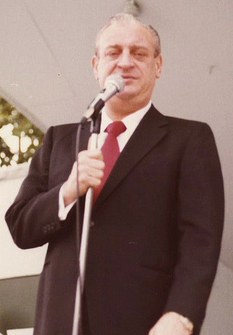 Image via Wikipedia
Image via Wikipedia
This is the second installment in a new series. We will provide you with a nice juicy, yet thorny, fact pattern and you then get to become the hearing officer or judge. (Not so easy is it?) Remember though that special ed law is closed to metaphysics than it is to
contract law. There may not always be a "right" answer. There may be as many correct answers as there were disparate rulings on the last case to be decided by the Supremes. Remember also the dialectic of special ed law: it is new law and at the same time the law is changed periodically creating a cycle of uncertainty. Remember to let us know what you think. Enjoy:
Johnny was born in July 1998. Approximately two and a half years later he was diagnosed with autism. As a result of his condition, Johnny has "severely delayed communication skills." This delay manifests itself in several ways, including the fact that "[Johnny is] very much in his own world, [does] not respond to his name, [does] not make eye contact, and [does] not want to be part of any of the groups that [are] around him." Johnny also has a short attention span and is easily distracted by movements outside.
During the period from Johnny's diagnosis until his third birthday, Resources for Young Children and Families provided funding for an in-home program. As part of this in-home program, Johnny received 16.5 hours of one-on-one therapy per week. When Johnny turned three, the responsibility for complying with the IDEA's requirements shifted to his local school district. Pursuant to these requirements, the Home School District (the "District") assessed Johnny's learning skills during a "play-based assessment." This assessment provided the foundation for an individualized education program ("IEP).
Subsequent to the assessment, Johnny's parents met with District employees to review a draft IEP for the 2001-2002 school year ("2001 IEP") in May 2001. The District's director of special education, a special education teacher, an occupational therapist, a social worker, and the District's autism specialist all attended the IEP meeting. The draft IEP documented several items, including: (i) the data gathered during the assessment; (ii) Johnny's levels of functioning, achievement, and performance; (iii) a statement of educational needs; (iv) a statement of goals and objectives; (v) a statement of special education needs and related services; and (vi) a recommended placement. To provide Johnny with a free appropriate public education ("FAPE"), the IEP proposed a total of 10.75 hours of services per week. A significant portion of that total -- 9.5 hours per week -- would occur in an education placement in an integrated preschool classroom, while the remainder -- 1.25 hours per week -- would consist of additional educational services, such as speech and language services.
Johnny's parents rejected the draft IEP's suggested placement due to their concerns about Johnny's educational experience in an integrated classroom. The Parents believed that the suggested placement would not have benefited Johnny. To support their position, the Parents provided the District with letters from two behavior specialists, a neurologist, and a staff member at the JFK Center for Developmental Disabilities.
The District and the Parents held another meeting on August 2, 2001. This meeting did not constitute an official IEP team meeting because several team members were out of town. At this meeting, the District offered to increase the total service hours to 20 hours per week. The District, however, never formally amended the IEP to reflect this offer. Due to their continued concerns about Johnny's placement, the Parents rejected the draft IEP shortly after the August 2, 2001 meeting. They instead continued Johnny's at-home program at their own expense. The District did not complete a final IEP for Johnny for the 2001-2002 academic year.
The District and the Parents began discussions regarding an IEP for the 2002-2003 school year ("2002 IEP") in October 2002. In preparation for this IEP, the District evaluated Johnny using both the Mullen Scales of Early Learning and the Vineland Adaptive Behavior Scales. The Parents and the District employees on the IEP team met on November 20, 2002, to discuss the 2002 IEP. The 2002 IEP proposed a total of 25 hours of services per week. The plan included 20 hours per week in an integrated classroom, and 5 hours per week of one-on-one discrete trial training.
Unlike the previous year, the District finalized the 2002 IEP and delivered it to the Parents; however, the Parents neither agreed to nor signed the 2002 IEP. Instead, they continued the at-home program that consisted primarily of one-on-one instruction. Beginning in November 2002, Johnny's parents also enrolled him in a private preschool for nine hours per week. Johnny attended the private school with the help of an aide. The Parents paid for both the at-home program and the private school.
On November 15, 2002, the Parents submitted their demand for an Impartial Due Process Hearing.
You are the hearing officer, what do you do?
 Image via Wikipedia
Image via Wikipedia






































